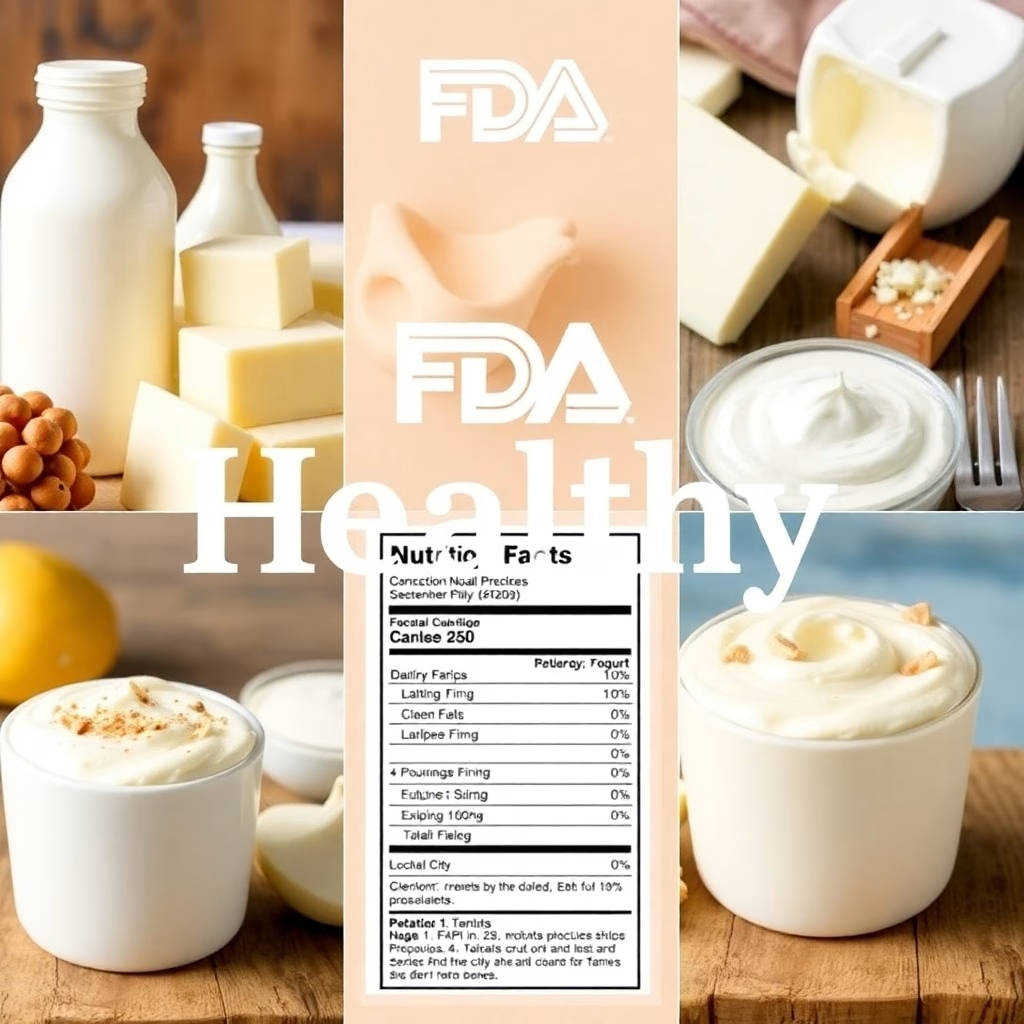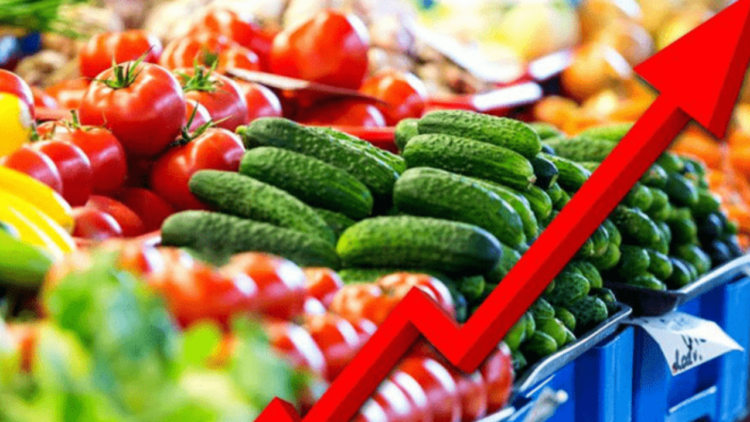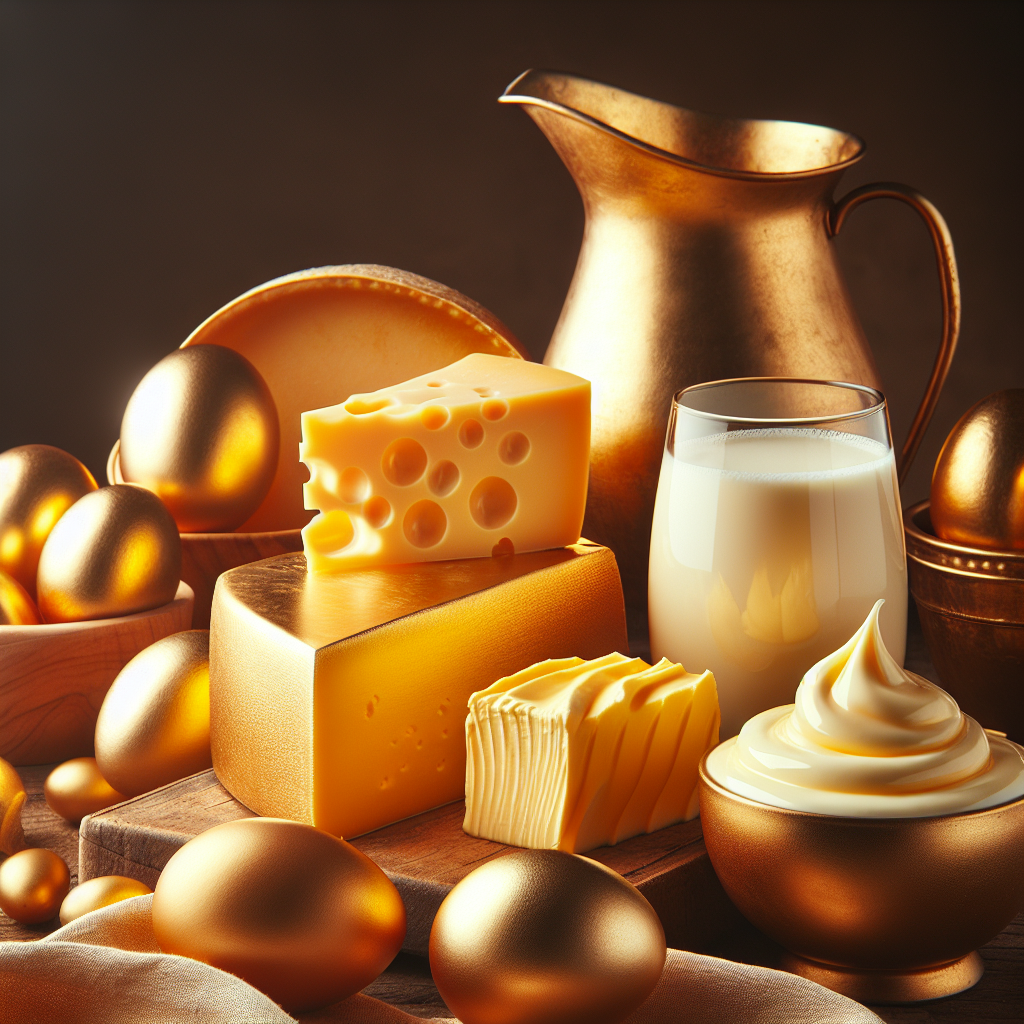Find out how the FDA’s new “healthy” label rules affect dairy farmers. Are your products prepared for this change? Learn the essentials now.
Summary:
The new FDA rule on “healthy” food labels is shaking up the dairy industry, causing concern among dairy farmers and producers. This is the first update since 1994, and it enforces strict standards on what products can be marketed as “healthy.” Dairy products must have limited sodium, saturated fat, and added sugars; no more than 2/3 cup of fat-free or low-fat dairy is required to qualify. However, this poses challenges for cheese and flavored yogurts, which often can’t meet these new guidelines. The International Dairy Foods Association (IDFA) criticizes the rule as too restrictive, as many nutritious dairy products won’t cut. As we look toward the 2025 Dietary Guidelines, dairy farmers must stay informed and adapt to these evolving standards to meet consumer demand.
Key Takeaways:
- The FDA has introduced a final rule redefining “healthy” food labels with precise criteria that will impact food and beverage manufacturers.
- Foods must meet specific nutrition criteria, such as limits on sodium, saturated fat, and added sugars, to bear the “healthy” label.
- Dairy products like most cheeses and sweetened yogurts might face challenges in qualifying for the “healthy” label under the new standards.
- The label remains voluntary, serving as a potential marketing tool for manufacturers despite differing reactions from researchers and industry groups.
- A significant portion of the American diet does not align with recommended dietary guidelines, contributing to chronic health concerns.
- The forthcoming 2025 Dietary Guidelines may further influence consumer behaviors and the approach of food manufacturers.
- Dairy farmers and processors may need to adapt to these new regulations while addressing nutritional balance and market demands.

When people open a food package, they are immediately hit with a barrage of marketing terms, nutrition facts, and eye-catching pictures. The word “healthy” is at the top of these labels, which can be hard to understand. It seems like a simple word, but the Food and Drug Administration (FDA) has recently made changes that will change how it is used in a big way. This article discusses the new FDA “healthy” rule for dairy farmers. It focuses on the most critical parts of the changes and how they might affect the industry.
The Evolution of “Healthy”: From Outdated Standards to Modern Dietary Insights
Nutrition science has made a lot of important discoveries since 1994 that have changed our ideas about a “healthy” diet. The Food and Drug Administration (FDA) has known for a long time that the standards set almost 30 years ago did not match what we know now about nutrition. Back then, the criteria were based on less complete data. It was also a time when nutritional needs and ideas were more straightforward and not as well supported by new research. Scientists have learned more about how different nutrients affect health over time. This has led to changing labeling rules to match the Dietary Guidelines for Americans. These improvements showed that the FDA seriously changed the labels people should trust when choosing “healthy” products. This change in strategy and thinking aims to improve public health by helping people make better food choices.
Redefining ‘Healthy’: New Standards, New Challenges for the Food Industry
The new FDA rule, a significant milestone in the food industry, has redefined what can be called “healthy” on food and drink packages. Even though the rule starts soon, manufacturers have until February 2028 to change their labels if they want to use the “healthy” claim. Companies need time to re-formulate or redesign their packaging after these changes, which is why this time is given.
The rule is mainly about criteria: specific limits on sodium, saturated fat, and added sugars, all known to be bad for your health if you overeat. It aims to give the word “healthy” more meaning by matching the current dietary guidelines.
Dairy products must be equal to or less than 2/3 cups of fat-free or low-fat dairy. This policy encourages people to eat dairy in healthy ways and limits the nutrients that are bad for them. It could also change people’s attitudes toward processed dairy and encourage them to eat less.
The new standards emphasize ensuring that foods labeled “healthy” are healthy, fixing past mistakes. Now, “healthy” must mean something to both manufacturers and consumers. This will help people make better decisions based on the latest nutritional science.
New “Healthy” Label Rules Stir Up Challenges for the Dairy Industry
Undoubtedly, the new FDA rules will make things very hard for dairy products. Many dairy industry people feel the strain of the strict rules. For example, think about cheese. Some people can’t live without cheese, but most cheeses can’t be called “healthy” because they have too much sodium. Don’t forget about sweetened yogurts, either. They’re a popular choice among consumers but often have more added sugar than the new rules allow. The challenges are real, and we understand their impact on the industry.
The International Dairy Foods Association (IDFA) has not been afraid to express dissatisfaction with the rule, which it calls ‘narrow.’ It has been said that many dairy products will not be able to receive the coveted label, even though dairy is good for you. The IDFA’s concerns about the impact on popular dairy products and the potential disconnect between regulatory goals and industry practices highlight the challenges the dairy industry faces in adapting to the new standards.
The Voluntary “Healthy” Label: A Marketing Conundrum in Nutritional Science
Food companies use the “healthy” label to attract buyers who care about their health, but it’s still unnecessary. Labels on foods should now match what we know about nutrition from new rules, but people have different thoughts. On the one hand, health advocates and researchers see the new rule as a significant improvement over the old one from 1994, which they say didn’t reflect what we know now about nutrition. They think these changes will help people choose healthier foods, benefiting everyone.
That being said, some people who work in the food business think the new rules are too strict. They talk about how far we’ve come to make healthier foods and worry that these strict rules will stop innovation and make it harder for people to choose what they want. Some healthy foods, especially those necessary in some cultures, might not meet the new ‘healthy’ standards. This could lead people astray about how healthy they are. There is a more significant debate about how to find the best balance between scientific accuracy and helpful labeling. It asks how the business world can adapt to these changing standards and still meet the needs of a wide range of customers. The new rules could also influence consumer behavior, potentially leading to a shift in food choices and a greater emphasis on healthier options.
Navigating the Storm: The Role of Dairy in America’s Dietary Shift
We need to look at the bigger picture while the FDA works to change what “healthy” means. How we eat is linked to a lot of health problems, like heart disease, diabetes, and being overweight. This isn’t a tiny aside; it’s a critical issue when discussing food policy. Over 75% of Americans don’t eat enough fruits, vegetables, and dairy; this is scary. Also, over 90% of people eat too much sodium, and 80% and 60% eat too much saturated fat and added sugar, respectively.
So what does this mean for someone grocery shopping or a mom trying to make healthy meals? With all the fast food and false “healthy” labels, it can be hard to choose healthy foods. “How did we get here?” you might ask. It’s a combination of factors, such as easy-to-get processed foods, busy lives, and not putting enough value on nutrition education.
So, where do farmers who raise dairy and people who grow food fit in? They have to deal with popular foods high in salt, fat, and sugar while also trying to make healthier choices. The key is finding a balance between what people want and getting them to eat healthier. Anyone who works in the food industry and wants to help lower chronic disease in the US must understand the bigger picture of diet.
Embracing the Challenge: How Dairy Farmers and Processors Can Thrive Amid New Dietary Guidelines
The 2025 Dietary Guidelines for Americans will likely change what people buy and how the food industry works. It means that dairy farmers and processors need to stay informed and ready. These changes could change the kinds of products that health-conscious customers want, which could affect production and strategies. It’s not enough to follow the rules; you must find new ways to meet today’s consumers’ nutritional and taste needs. Farmers who raise dairy may find it hard to follow these rules, but it’s a chance to show how dairy products are unique. Even if the rules are stricter, knowing these guidelines can help you write interesting stories about the health benefits of dairy.
In the meantime, processors may have to make hard choices. They may need to develop new ideas to stand out in the market, like lowering sugar and sodium in their products without affecting their taste or quality. This rule change makes the dairy industry more likely to think outside the box when advertising new products. Let’s welcome the new, stay alert, and see where this changing world can take us!
The Bottom Line
New rules from the FDA make it harder to label foods as “healthy.” This is a significant change for the dairy industry. Now, it’s up to dairy farmers and processors to ensure their products meet these new standards while still being healthy. The industry can find opportunities to push for openness and new ideas by staying up-to-date and adaptable. It’s essential to balance these rules and what the business needs. It tells people in the dairy industry to be open to change and do well in this new era of health consciousness.
Learn More:
- Discover What Dairy Consumers Think: Eye-Opening Insights for the Dairy Farmer
- Why 80% of U.S. Dairy Farms Are Struggling: An Insider’s Look at the Unseen Challenges
- Rural Politicians Urge Faith in Farmers Amid Skepticism of Climate Goals
 Join the Revolution!
Join the Revolution!
Bullvine Daily is your essential e-zine for staying ahead in the dairy industry. With over 30,000 subscribers, we bring you the week’s top news, helping you manage tasks efficiently. Stay informed about milk production, tech adoption, and more, so you can concentrate on your dairy operations.







 Join the Revolution!
Join the Revolution!








